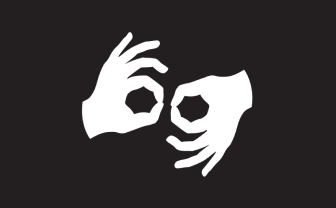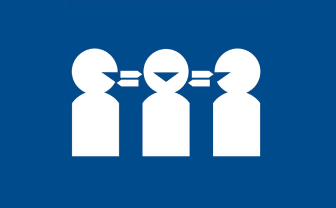What is liver cancer?
Primary liver cancer occurs when the cells of liver become abnormal and keep multiplying and growing. The abnormal cells form a cancerous mass or lump called a tumour. There are different types:
- Hepatocellular carcinoma (HCC), also known as hepatoma, is the most common form of primary liver cancer. It develops in hepatocytes, the main type of liver cell.
- Cholangiocarcinoma, or bile duct cancer, arises in the cells that line the bile ducts, which carry bile from the liver to the bowel and gallbladder.
- Angiosarcoma is a rare liver cancer that originates in the blood vessels of the liver. It is more commonly diagnosed in people over the age of 70.
Secondary liver cancer starts in another part of the body and spreads to the liver. It is more common in Australia than primary liver cancer.
In 2016, liver cancer was responsible for 1,864 deaths nationally, making it one of the top 10 causes of cancer-related mortality in Australia. It is also the fastest-growing cause of cancer death in the country. Yet, this outcome is not inevitable, as around 65% of liver cancer deaths in Australia are considered potentially preventable. Because liver cancer is often diagnosed at a late stage, it has a high mortality rate. For those diagnosed between 2010 and 2014, the five-year relative survival rate was just 18%. [1]
Symptoms
Symptoms of liver cancer usually develop or become more noticeable as the disease progresses or reaches an advanced stage.
Symptoms may include:
- Weakness and tiredness
- Discomfort in the upper right abdomen
- A swollen abdomen
- Jaundice (yellowing of the skin and whites of the eyes)
- Easy bruising or bleeding
- Loss of appetite or feelings of fullness after small meals
- Unintentional weight loss
- Pale, chalky bowel movements and dark urine
- Pain in the right shoulder
- Fever
If you have any of these symptoms, it is important to see your GP or health specialist as soon as possible.
Causes
Chronic and untreated infection with hepatitis B or C is the leading known risk factor for primary liver cancer in Australia.
There are other factors that can increase the risk of developing liver cancer, such as:
- Steatotic liver disease (fatty liver disease)
- Genetic disorders, including haemochromatosis, or alpha 1-antitrypsin deficiency
- Type 2 diabetes
- Excessive alcohol consumption
- Smoking tobacco products
- Exposure to certain chemicals
- Obesity
Diagnosis
Tests to diagnose both liver cancer and secondary cancer of the liver include:
Blood tests: Blood tests can check how well the liver is working and whether your have any markers for tumours or diseases of the liver
Ultrasound: The most commonly used method to look for primary liver cancer, an ultrasound produces pictures of the liver
CT scan: CT scans produce three-dimensional pictures of several organs all at once
MRI: An MRI scan produces detailed cross-sectional pictures of the body, and can show the extent of a tumor and whether it is affecting the main blood vessels around the liver.
PET-CT scan: More commonly used for secondary cancers in the liver, also produces three-dimensional images of the liver
Biopsy: A biopsy is when a small amount of tissue is taken to be checked under a microscope.
If you have secondary cancer in the liver, you may have further tests to find out which part of the body the primary cancer came from.
Treatment
Treatment of liver cancer varies greatly depending on the number and size of the tumours, whether it has spread outside of the liver, and the liver’s general health.
Surgery: Involves removing part of the liver (partial hepatectomy) or, for some people, a liver transplant.
Tumour ablation: Used mainly for small primary liver cancers, destroys tumours with chemicals
Chemotherapy: Drugs given by tablet, drip, or directly into the tumour.
Biological therapy: Treatments that block cancer growth or help the immune system fight it.
SIRT: Delivers radiation directly into liver tumours, when surgery isn’t possible.
Stent placement: A stent can relieve bile duct blockages caused by cancer.
Palliative care: Helps manage symptoms, reduce pain, and improve quality of life.
Prevention
Chronic hepatitis B and C infections, along with steatotic liver disease (SLD), are the biggest known risk factors for primary liver cancer in Australia. Prevention strategies include vaccinating people at risk of hepatitis B and regularly monitoring the health of those already infected.
We recommend you visit our resources such as the Hepatitis B and C Information Hubs and the Steatotic Liver Disease (SLD) Information Hub for information on preventing liver cancer.
Support
Being diagnosed with liver cancer can be overwhelming, and it’s normal to feel upset, depressed, or angry. You are not alone, and support is available to help you through this time. Talking with family, friends, and your healthcare team can make a big difference. You can also call the LiverLine on 1800 703 003 for information and support, or connect with the Cancer Council on 13 11 20 to talk to an experienced healthcare professional who can refer you to services and resources to support your journey. Reaching out for help is an important step, and there are people and services ready to support you every step of the way.
The Understanding Liver Cancer guide from Cancer Council Australia helps people diagnosed with liver cancer, their families, and carers understand what to expect at each stage; from diagnosis and treatment to follow-up and supportive care. It offers clear information on tests, treatment options, managing side effects, and accessing support services.






